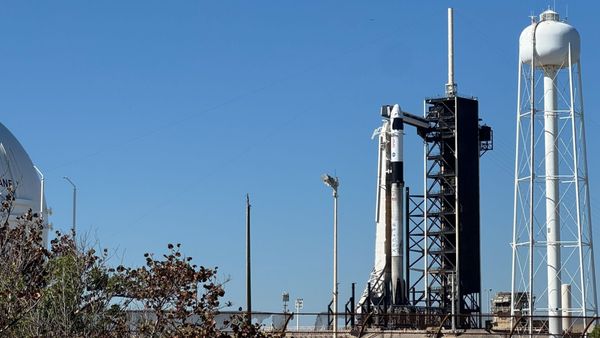/Intel%20Corp_%20logo%20on%20mobile%20phone-by%20Piotr%20Swat%20via%20Shutterstock.jpg)
Intel (INTC) has faced a challenging year, with its shares down over 53% year-to-date, significantly underperforming the broader market. Once a semiconductor giant, Intel has grappled with falling revenue, increasing competition from rivals, and shrinking profit margins.
Intel dominated the semiconductor industry for years, but the competitive landscape has shifted. Competitors like Advanced Micro Devices (AMD) and other chip makers have surged ahead, gaining ground in key segments such as the Client Computing Group (CCG) and Data Center and AI Group (DCAI).
Moreover, Intel has struggled to capitalize on the booming demand for artificial intelligence (AI) technology. These factors have led to a massive correction in its share price and stalled growth.
Nonetheless, Intel’s aggressive cost reduction measures and the recent Q3 report offered some hope. Results exceeded analysts' expectations, leading to a slight recovery in share prices. However, while these results were encouraging, the company’s road to recovery remains filled with challenges.

Industry-wide Headwinds
Intel’s recovery is further complicated by the broader economic environment. Cyclical slowdowns in the semiconductor industry and inventory corrections in Intel's client computing segment have weighed heavily on revenue.
While Intel’s Q4 guidance points to slight revenue improvement, demand remains weak, and inventory drawdowns are still ongoing. Given the macroeconomic uncertainties and industry-wide inventory issues, Intel's rebound may be restricted by external pressures beyond its control.
Slow Adoption of Gaudi 3
Intel's next-gen Gaudi 3 AI accelerator, intended to enhance large language model (LLM) efficiency, has experienced slower-than-expected adoption, partly due to transitional issues from Gaudi 2. This delay undermines Intel’s goal of generating significant AI-related revenues, which is crucial as the demand for AI accelerators and machine learning technologies surges.
As a result, Intel doesn’t expect to achieve its target of $500 million in revenue for Gaudi in 2024. If these product transition issues persist, Intel’s long-term growth in the fast-growing AI segment may remain limited.
Intel’s Foundry Segment Faces Ongoing Struggles
Intel’s foundry operations face an uphill battle as they try to re-establish process leadership. The foundry segment posted a loss of $5.8 billion in Q3, with Intel citing expected future losses as well. This indicates that Intel could take years to catch up with the profitability of rival Taiwan Semiconductor Manufacturing Company (TSM).
Amid speculation about possible spinoffs, TSMC has expressed no interest in acquiring Intel’s foundries, citing financial and regulatory concerns.
Market Share Losses
While Intel has long been a leader in the semiconductor industry, heightened competition has eroded its market share. Intel’s creation of an x86 Ecosystem Advisory Group in partnership with AMD is a positive step. Still, the ecosystem’s challenges are amplified by rising competition in other architectures, like Arm Holdings (ARM), which is gaining traction in high-growth sectors such as mobile devices and servers.
This erosion in market dominance, combined with ongoing performance pressures, suggests that Intel may struggle to reclaim its lost market share.
A Silver Lining: Intel’s Innovation in AI-Driven PCs
Despite these headwinds, Intel's future products—such as its AI-enabled PC lineup featuring Lunar Lake and Arrow Lake—highlight the company's strength in high-performance computing. Its upcoming Panther Lake CPU, built on Intel's advanced 18A process node, could give Intel an edge in high-performance computing sectors.
Long-Term Prospects and Margin Expansion
Intel anticipates that by 2025, its mix of outsourced products and growing CCG segment will help drive incremental revenue. Furthermore, Intel expects a significant improvement in gross margins by 2026, benefiting from the cost efficiencies of Intel 18A technology, utilization of its foundries, and other operational improvements. However, gross margin expansion may be modest until these efficiencies fully materialize.
Bottom Line
While Intel is taking measures to right-size its business and improve operational efficiencies, the challenges it faces are complex and multi-faceted. Execution risks, eroding market share, slow adoption of new products, and stiff competition all suggest a prolonged path to recovery.
Given the ongoing challenges, most Wall Street analysts are cautious about the stock and maintain a “Hold” consensus rating.








